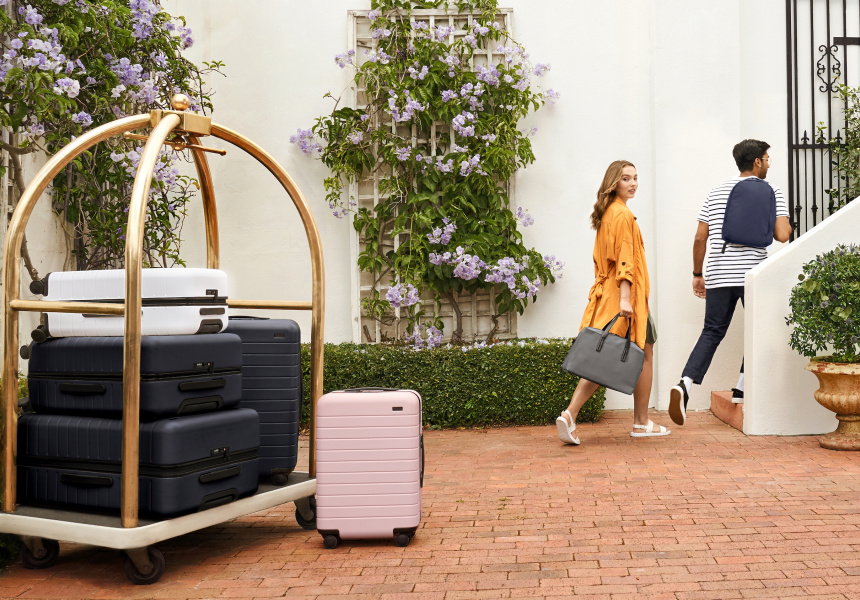Table of Contents
- Introduction
- Types of Luggage
- Hard shell Luggage
- Softshell Luggage
- Rolling Luggage
- Duffel Bags
- Backpacks
- Choosing the Right Size
- Materials Used in Luggage
- Polycarbonate
- Nylon
- Leather
- ABS
- Features to Consider
- Wheels
- Handles
- Compartments and Pockets
- Locks and Security
- Travel Restrictions and Guidelines
- Luggage Maintenance and Care
- Conclusion
Introduction
Luggage is not just a container for your belongings; it’s a travel companion that can significantly impact your journey. From the type of luggage to its size, material, and features, there are numerous considerations when choosing the perfect travel bag. This comprehensive guide aims to navigate through the diverse world of luggage, helping you make informed decisions that suit your travel needs.
Types of Luggage
Hard shell Luggage
Characterized by its rigid outer shell, hardshell luggage offers superior protection for fragile items. It’s ideal for air travel and provides resistance against water and rough handling.
Soft shell Luggage
Soft shell luggage is more flexible and lightweight. It often includes external pockets for easy access to essentials and can be compressed to fit into tight spaces.
Rolling Luggage
Rolling luggage, equipped with wheels and a retractable handle, facilitates easy maneuverability through airports and crowded spaces. It comes in both hardshell and soft shell variants.
Duffel Bags
Duffel bags are versatile, typically made of fabric, and favored for their spaciousness. They are excellent for casual travel, gym sessions, or short trips.
Backpacks
Backpacks offer hands-free convenience and are popular among backpackers and those navigating through uneven terrain. They come in various sizes and styles, suitable for different purposes.
Choosing the Right Size
The appropriate luggage size depends on the duration and nature of your trip. Airlines often have specific size restrictions for carry-on and checked baggage. It’s crucial to adhere to these guidelines to avoid additional fees or inconvenience during travel.
Materials Used in Luggage
Polycarbonate
Known for its durability and impact resistance, polycarbonate is a common material for hardshell luggage. It’s lightweight yet sturdy, providing excellent protection for your belongings.
Nylon
Softshell luggage often utilizes nylon due to its flexibility, water resistance, and ability to withstand wear and tear. It’s a popular choice for travelers seeking lightweight options.
Leather
Leather luggage exudes elegance and sophistication. While it requires more maintenance, high-quality leather bags can last for years and develop a unique patina over time.
ABS
ABS (Acrylonitrile Butadiene Styrene) is a lightweight and impact-resistant material commonly used in affordable hard shell luggage options.
Features to Consider
Wheels
Luggage wheels come in two primary configurations: two-wheel and spinner wheels. Spinner wheels offer 360-degree rotation, providing effortless movement in any direction.
Handles
Telescopic handles should be sturdy and adjustable to ensure comfortable handling. Some bags feature multiple handles for versatility in lifting and carrying.
Compartments and Pockets
Well-designed compartments and pockets enable efficient organization of belongings. Separate sections for clothes, toiletries, and electronics can simplify packing and unpacking.
Locks and Security
Built-in locks or TSA-approved locking systems help secure your belongings during transit. Ensure compliance with airline regulations regarding luggage locks.
Travel Restrictions and Guidelines
Different airlines and countries have specific regulations regarding luggage weight, size, and contents. Familiarize yourself with these guidelines to prevent any last-minute hassles at the airport.
Luggage Maintenance and Care
Proper maintenance can extend the lifespan of your luggage. Regularly clean the exterior, handle zippers and wheels with care, and store your luggage in a cool, dry place when not in use.
Conclusion
Choosing the right luggage involves considering various factors, including type, size, material, and features. By understanding your travel needs and preferences, you can select luggage that not only safeguards your belongings but also enhances your travel experience. Prioritize durability, functionality, and compliance with travel regulations to ensure a smooth and hassle-free journey.
Luggage isn’t merely a carrier; it’s an essential aspect of travel, impacting comfort, convenience, and the safety of your possessions. Invest in quality luggage that aligns with your travel habits and destinations to make every trip a seamless and enjoyable experience.





